Almost everyone is captivated by the Rubik’s cube. However, many individuals do not know who invented the Rubik’s cube. He or she must be a genius, right? And why is it called the Rubik’s cube? Notice that I said Rubik’s cube, not Rubrics cube. Some individuals fall prey to the malapropism of using the English term rubric, which denotes a category label or an established rule or custom, with the name of the puzzle Rubik’s cube. The puzzle is called Rubik’s cube, not Rubric’s cube. You’ll understand why in a moment.
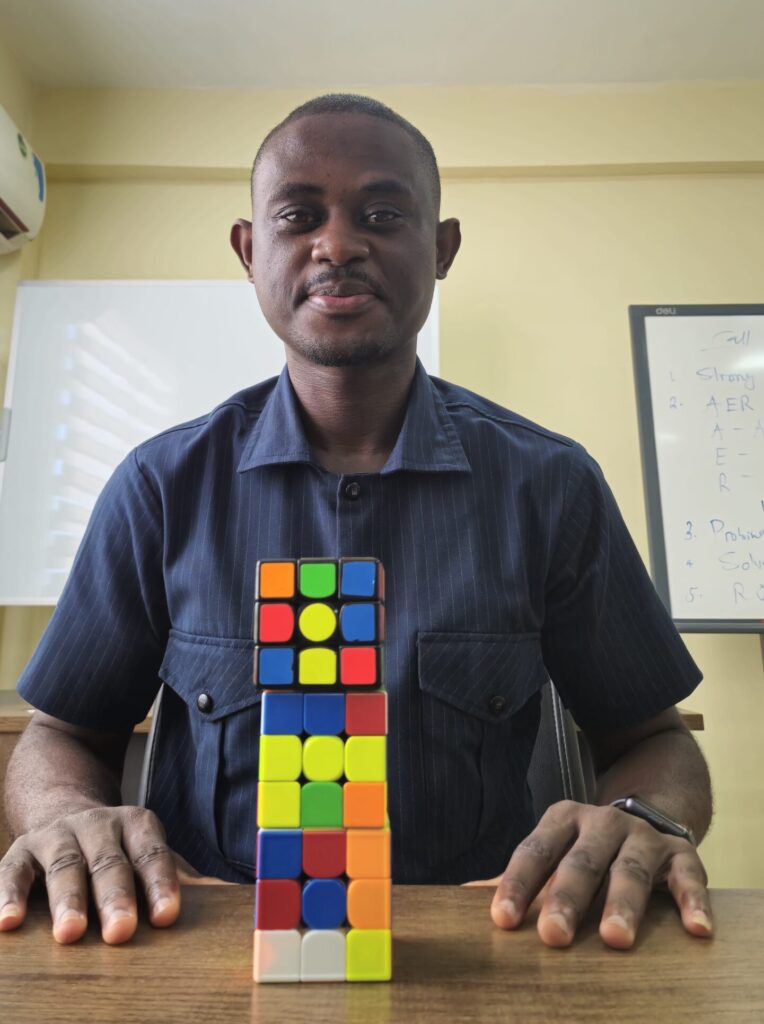
Who invented the Rubik's Cube?
Here’s your first fun fact about the Rubik’s cube. When the inventor first assembled it in 1974, he called it the magic cube. A toy agent later pitched the magic cube to the Ideal Toy & Novelty Company. Before introducing the magic cube to an international audience in 1980, Ideal renamed it Rubik’s Cube after the inventor who was called Ernő Rubik.
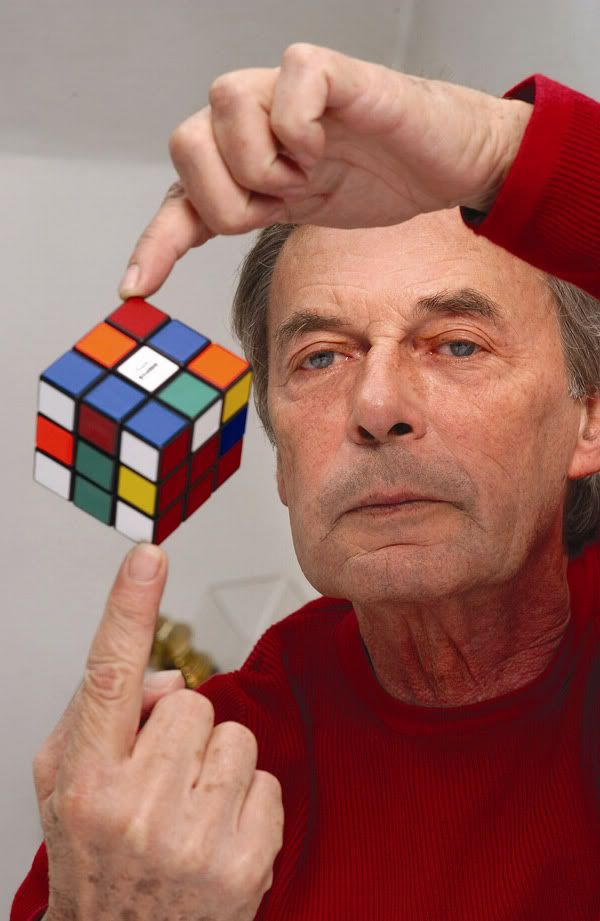
Photo Credit: hungarian-success-stories.com
Ernő Rubik licensed the rights to the company in 1979, making it the first puzzle to be advertised on TV. The Rubik’s cube wasn’t put up for retail sale until 1980. The Cube’s development from a prototype to mass manufacturing took more than six years. The Rubik’s Cube was an instant global hit, winning multiple Toy of the Year awards and becoming an iconic emblem of 1980s popular culture.
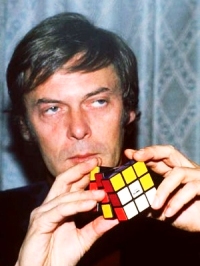
Photo Credit: ruwix.com
Popularity of the Cube
Puzzlers from all around the world quickly became interested in solving the cube. By 1980, Rubik’s Cube had been marketed all over the world, and over 100 million licensed copies, as well as an estimated 50 million illegal imitations, had been sold during the next three years of success, making Rubik’s Cube the most popular puzzle ever.
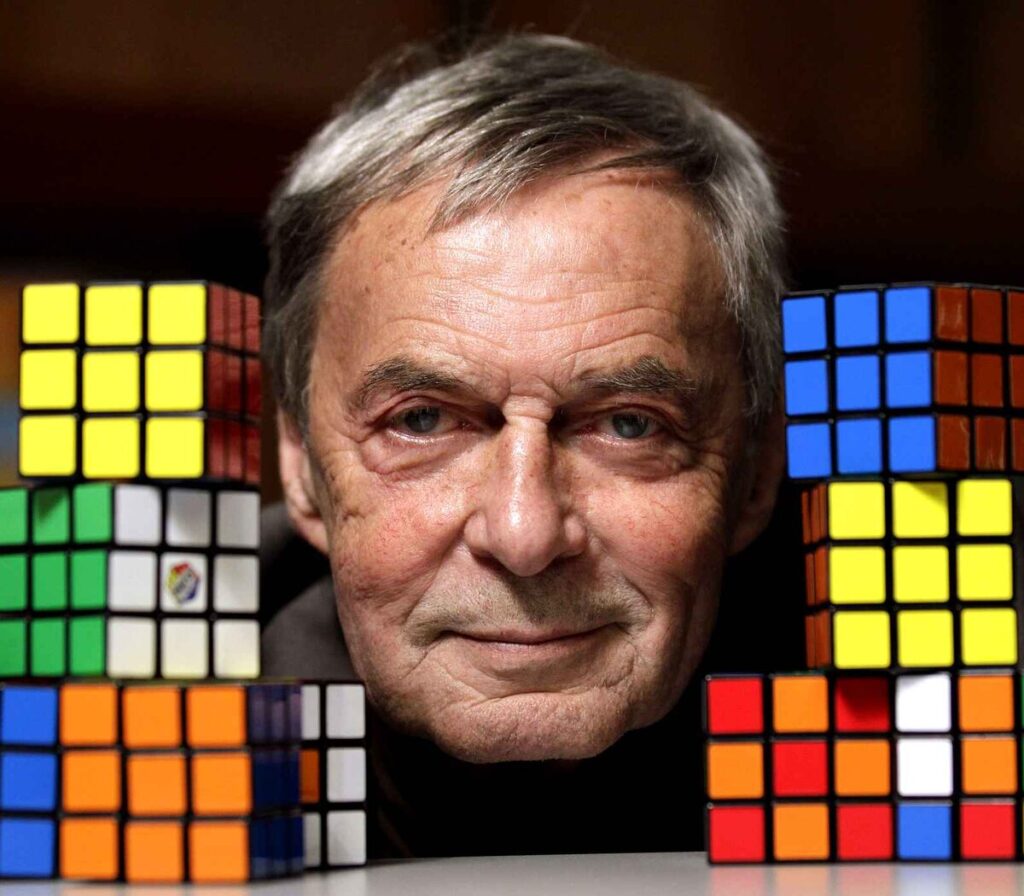
Photo Credit: kinglikesk.shop
Its popularity spawned hundreds of spin-off items, ranging from best-selling books on how to solve it to patent-infringing knockoffs by other manufacturers. Approximately 50 books have been released on how to solve the Rubik’s cube problem. After his cube became successful, Rubik established a design studio in 1984.
Fun Fact about the Rubik's cube
Second fun fact about the Rubik’s cube: The Rubik’s cube is not the only puzzle Ernő Rubik invented. In the mid-1980s, Matchbox began producing Rubik’s Magic, another invention of his. Another of his inventions is the Rubik’s Snake, which was introduced in 1981 during the peak of the Rubik’s Cube mania.
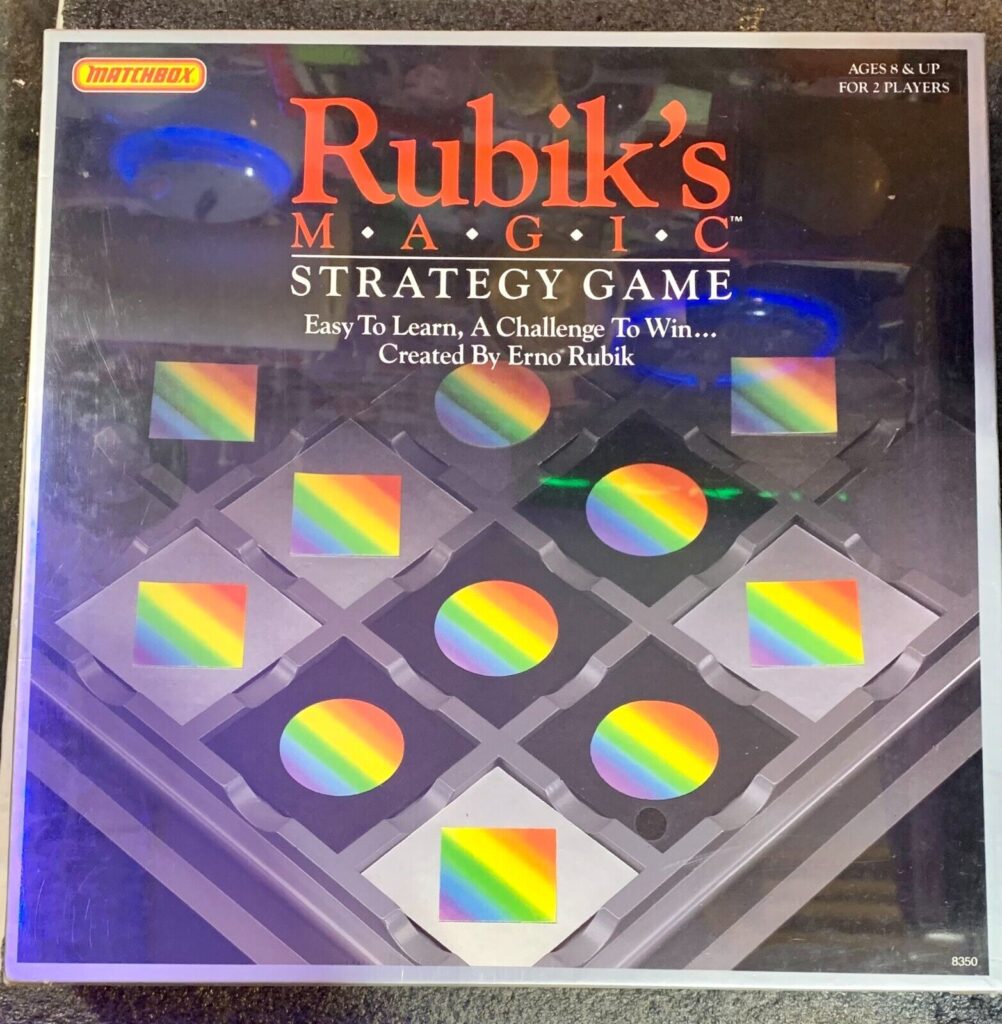
Photo Credit: Ebay
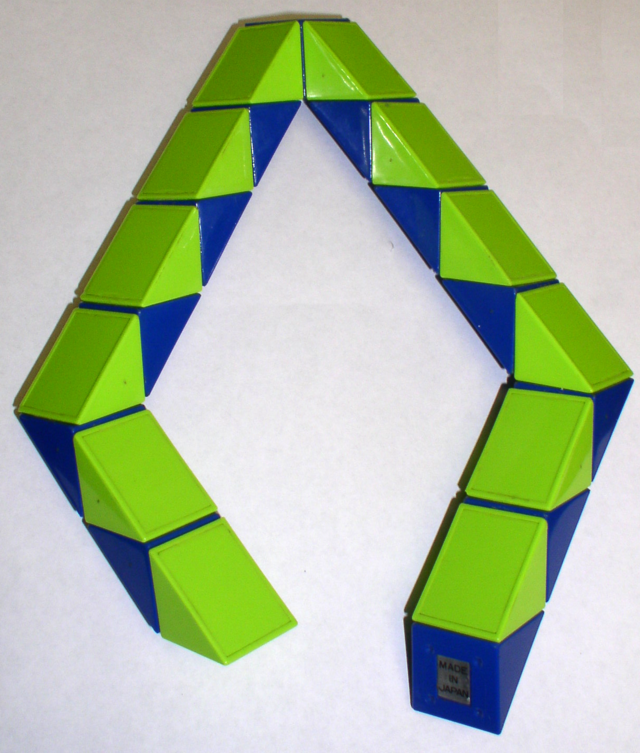
Photo Credit: Wikipedia
Who was Ernő Rubik?
Who was this man who had captivated the world with his puzzle?
Ernő Rubik was born in Budapest, Hungary, on July 13, 1944, during World War II, and has spent his whole life there.
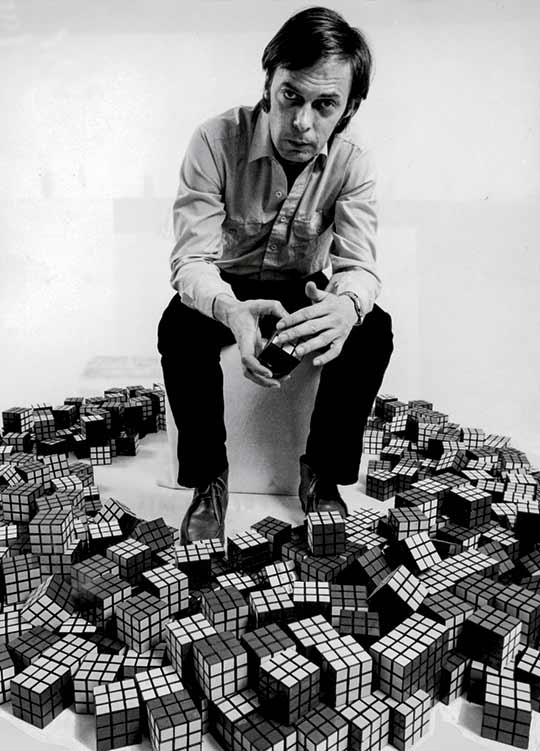
Photo Credit: 2003 Getty Images
His father, also called Ernő Rubik, was a flight engineer at the Esztergom aircraft factory. His mother, Magdolna Szántó, was a poet. In nearly every interview, Ernő Rubik cites his father as his source of inspiration. His father, Ernő, was a respected glider engineer with notable work and skill in this area, earning him a worldwide name.

Photo Credit: Winkler Archive
Ernő Rubik once stated that:
Beside him, I learned a lot about work in the sense of a value-creating process which has a target, and a positive result too. Both figuratively and literally he was a person capable of ‘moving a hill’. There was nothing that could prevent him from doing what he decided or bringing a project to a completion, if necessary, even with his own hands. No work was unworthy or undeserving for him.
Education
Ernő Rubik attended the Secondary School of Fine and Applied Arts from 1958 to 1962, specialising in sculpture. He attended the Budapest University of Technology from 1962 to 1967, eventually becoming a member of the Architecture Faculty. Rubik studied interior architecture and design at the Hungarian Academy of Applied Arts between 1967 and 1971.
Budapest University of Technology
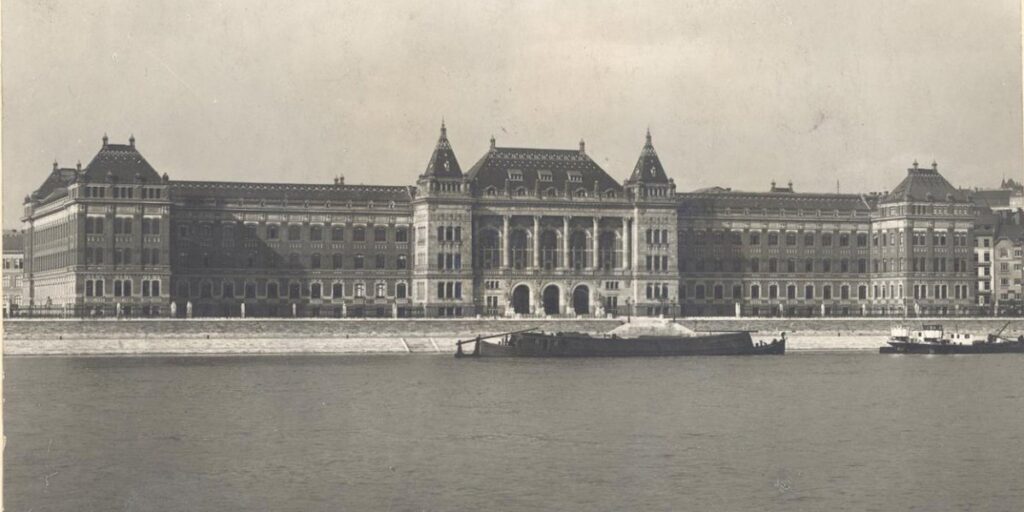
Photo Credit: PestBuda
Hungarian Academy of Applied Arts
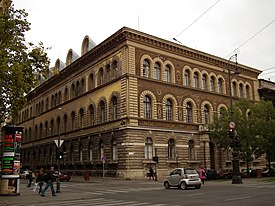
Photo Credit: Wikipedia
He continued to make geometric models as a hobby while working as a professor of design at the school. One of these was Rubik’s cube prototype, constructed of 27 wooden blocks, which took him a month to solve. It proved to be an effective teaching tool for algebraic group theory; hence, Konsumex, Hungary’s state trade firm, started to market it in late 1977.
The idea
Though the media first reported that Rubik designed the cube to assist students learn about three-dimensional objects, Rubik subsequently admitted that he deliberately set out to build a geometry-based puzzle. The 27 small cubes, or “cubies,” came together to create an incredibly difficult puzzle.

Photo Credit: Reddit
When put together, they formed a cube, with each face carrying one of the six colours. Finding a method to let the cubies slide and roll next to one another while remaining unified was Rubik’s hurdle. His breakthrough idea was his realisation that the individual blocks could move freely and still retain their cube-like form if they were hinged around a circular core.
The Construction of the Rubik's Cube
In an interview with the Guardian, Ernő stated:
In the mid-1970s, I was teaching design at the Academy of Applied Arts in Budapest. I was searching for a way to demonstrate 3D movement to my students and one day found myself staring into the River Danube, looking at how the water moved around the pebbles. This became the inspiration for the cube’s twisting mechanism. The fact that it can do this without falling apart is part of its magic.

Photo Credit: thegeographicalcure.com
Rubik began by assembling wooden blocks with elastic bands into a framework that would permit individual parts to move without the construction collapsing as a whole. When Rubik first started working on the cube, he chose wood for the block because it was easy to deal with and didn’t require complicated technology, plus the university had a workshop. Rubik created the first prototypes of his cube by hand, cutting the wood, creating the holes, and using elastic bands to keep the structure together.
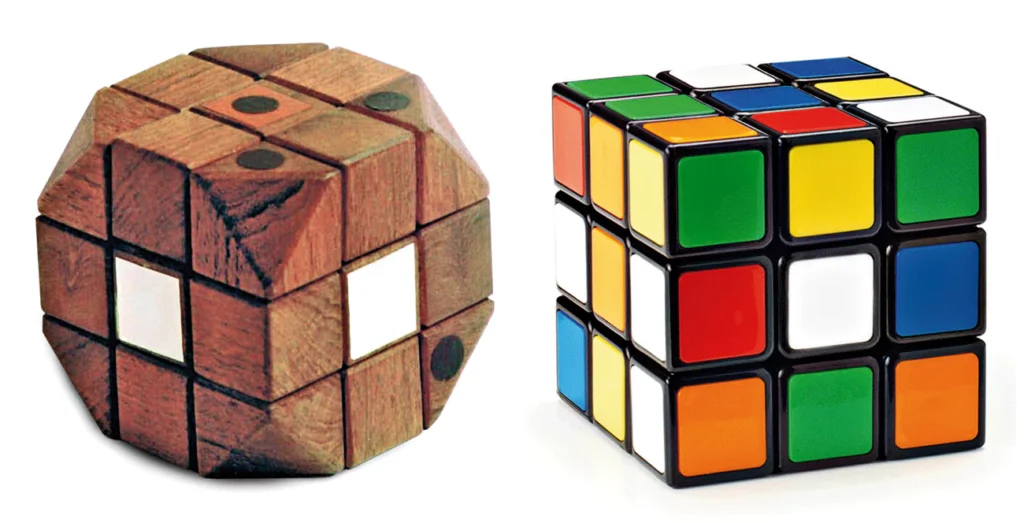
Photo Credit: Wikipedia
When Rubik presented his prototype to his class, the pupils were enthralled by it. Rubik believed that because of the cube’s basic construction, it could be manufactured relatively easily and appeal to more consumers. Rubik’s father owned multiple patents, so he was familiar with the procedure and sought for a patent on his invention.
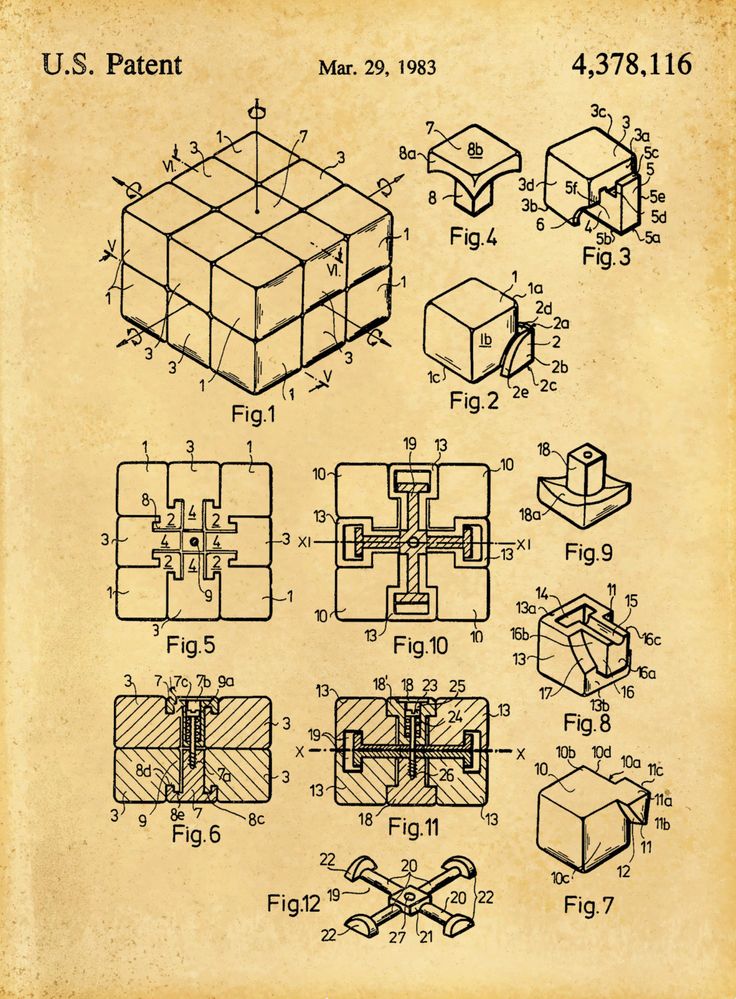
Photo Credit: etsy.com
Patent history of the Rubik's Cube
Larry D. Nichols designed a 2x2x2 “Puzzle with Pieces Rotatable in Groups” and applied for a Canadian patent in March 1970. Magnets held his cube together. Nichols received U.S. patent 3,655,201 on April 11, 1972, two years before Rubik invented the cube.
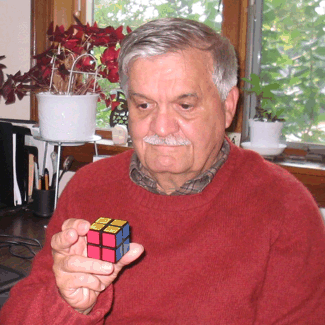
Photo Credit: DePauw University
Nichols licenced his invention to his company, Moleculon Research Corp., who sued Ideal in 1982. Ideal filed an appeal after losing a patent infringement lawsuit in 1984. In 1986, the appeals court upheld the ruling that Rubik’s 2×2×2 Pocket Cube violated Nichols’ patent, but reversed the ruling on Rubik’s 3×3×3.
Where is Ernő Rubik?
Rubik’s invention of the Rubik’s Cube and other puzzles brought him fame, but a large portion of his most recent effort has been devoted to advancing scientific education. Rubik is affiliated with a number of groups, including Beyond Rubik’s Cube, the Rubik Learning Initiative, and the Judit Polgar Foundation, all of which seek to educate students in science, mathematics, and problem solving at an early age.
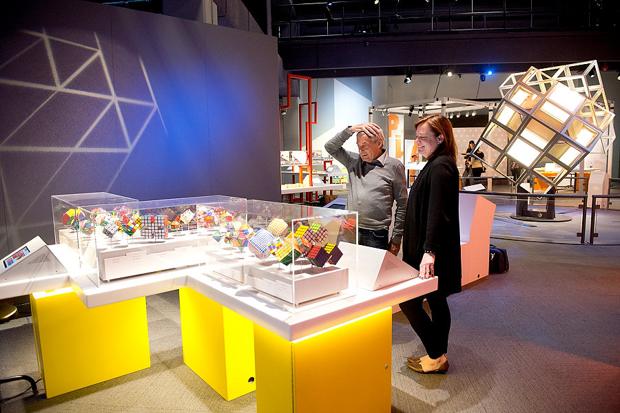
Photo Credit: nj.com
Rubik considers university and the education it afforded him as the decisive event which shaped his life. Rubik stated, “Schools offered me the opportunity to acquire knowledge of subjects or rather crafts that need a lot of practice, persistence, and diligence with the direction of a mentor.”
Speedcubing
Puzzlers, known as “cubers” or “speedcubers,” are drawn to the puzzle’s seeming simplicity and are typically adept at identifying the patterns—cubers call them algorithms—necessary to solve the cube. Speedcubing is a sport that involves solving the Rubik’s cube as quickly as possible. A speedcuber is someone who strives to solve the Rubik’s cube as quickly as possible.

Photo Credit: Edu Learn - Ghana
The World Cube Association has overseen cube-solving speed records, clinched by “speedcubers,” since 2003. In a speedcubing tournament, there are various categories such as speedsolving, blindfolded solving, multiple blindfolded solving, one-handed solving, and solving in the fewest moves.
Fun Fact about the Rubik's Cube
The third fun fact about the Rubik’s cube. It took the inventor about a month to solve his cube.
Yusheng Du previously held the world record for the fastest time to solve a 3×3 Rubik’s cube, clocking in at 3.47 seconds during the Wuhu Open 2018 in China.
Max Park beat Yusheng’s record in 2023 with a solve time of 3.13 seconds at the Pride Long Beach 2023 Tournament in the United States.
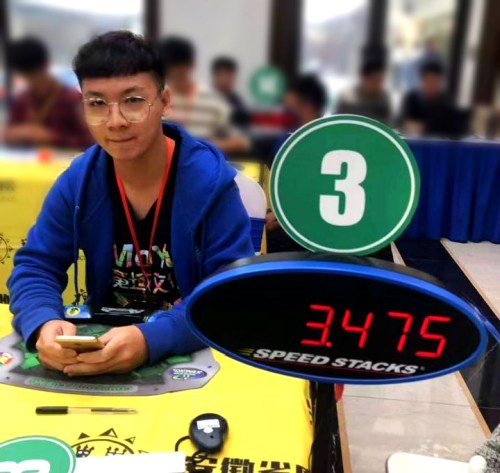
Photo Credit: ruwix.com
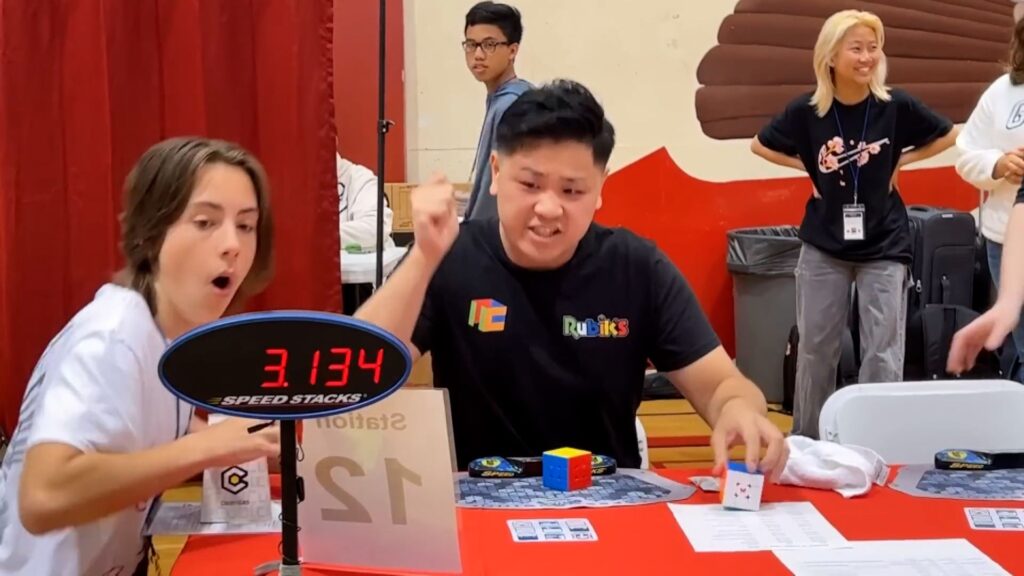
Photo Credit: CNN
Speedcubing has caused its own medical conditions: cube’s thumb and Rubik’s wrist. In the 1980s, cubaholic support groups helped manic cubers kick the habit. Cube’s thumb is a condition in which the thumb becomes inflamed after cubing for a lengthy period of time. Rubik’s wrist is a condition in which the wrist becomes inflamed after cubing for a lengthy period of time.
Beyond Rubik's Cube
The inventor attended the 2007 World Championship in Budapest. In 2009, he was appointed an honorary professor at Keimyung University in Daegu, South Korea. Rubik spent much of the 2010s working on Beyond Rubik’s Cube, a science, technology, engineering, and mathematics (STEM)-based exhibition that went around the world for the following six years.

Photo Credit: www.csfhungary.hu
The exhibit’s grand opening took place at the Liberty Science Centre in New Jersey on April 26, 2014. In addition to giving tours and talks, Rubik interacted with the public as well as several of the speedcubers in attendance, including world-class speedcuber Anthony Michael Brooks.
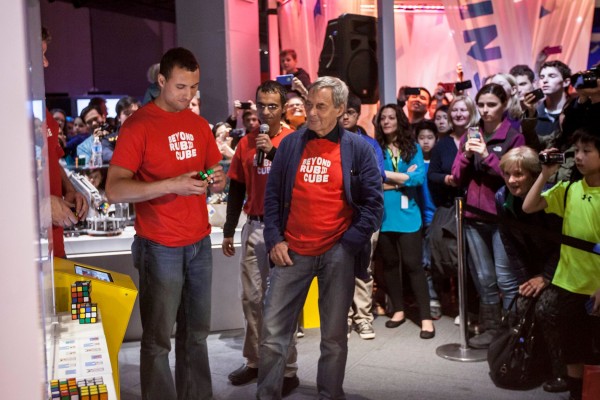
Photo Credit: brookscubing.com
Everyday Ernő Rubik
Ernő Rubik is a member of the USA Science and Engineering Festival advisory board. Several people have been mentioned by Ernő Rubik who, in his words, “exerted a great influence over me through their work.” Rubik admires Leonardo da Vinci, the Renaissance man; Michelangelo, a polymath, painter, and sculptor; and the artist M. C. Escher, who created impossible structures and experimented with infinity.

Photo Credit: Wikipedia
Rubik admires thinkers and writers such as Voltaire, Stendhal, Thomas Mann, Jean-Paul Sartre, Hungarian poet Attila József, Jules Verne, and Isaac Asimov. Rubik admires Frank Lloyd Wright and Le Corbusier’s architectural works.
Rubik affirms being a lifelong bibliophile, saying, “Books offered me the possibility of gaining knowledge of the world, nature, and people.” Rubik has mentioned that he is very interested in science fiction. Rubik enjoys outdoor activities like hiking, sports, and sailing on Lake Balaton. He is also a passionate gardener, claiming that “collecting succulents is my favourite pastime.”
Popularity of the Rubik's Cube
The cube regained popularity in the early 2000s. In the United States, sales soared between 2001 and 2003, and The Boston Globe noted that it was “becoming cool to own a Cube again.” The first speedcubing competition since 1982 was held during the 2003 World Rubik’s Games Championship. It was held in Toronto and attended by 83 people. The competition led to the creation of the World Cube Association in 2004.
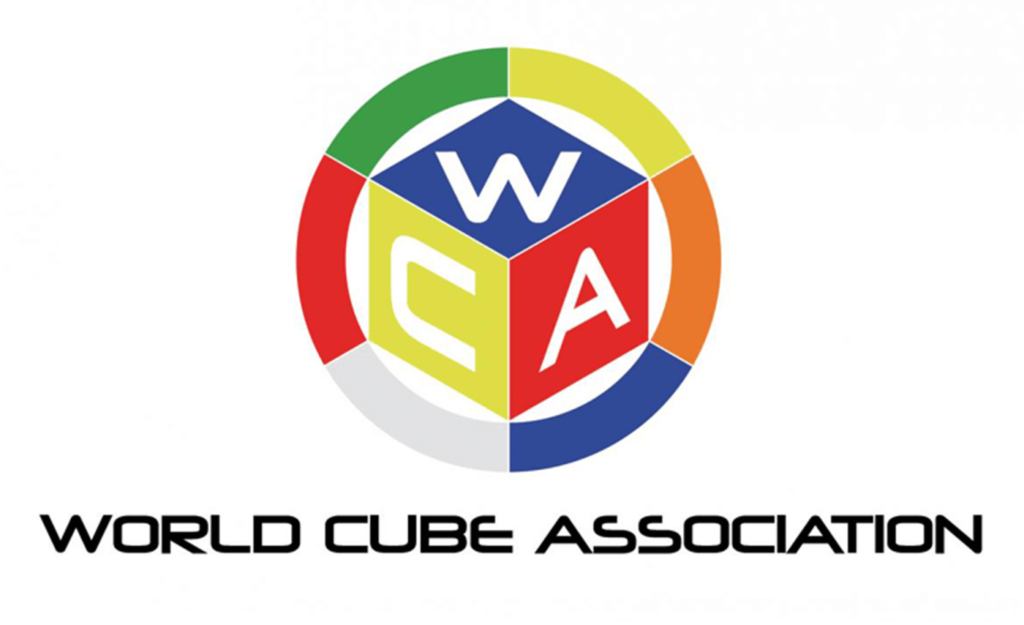
Photo Credit: SpeedCubeShop
Rubik-branded cube sales were estimated to surpass 15 million globally in 2008. Part of the increased popularity was attributed to the rise of Internet video sites like YouTube, which allowed hobbyists to share their solutions. After Rubik’s patent expired in 2000, various brands of cubes arose, primarily from Chinese companies. Many of these Chinese-branded cubes have been designed for speed and are popular among speedcubers. On October 27, 2020, Spin Master announced that it would spend $50 million to acquire the Rubik’s Cube brand.
More Fun Facts
More than 350 million Rubik’s Cubes have been sold worldwide, making it one of the best-selling toys of all time. There are several sizes, ranging from 2×2 to 21×21.
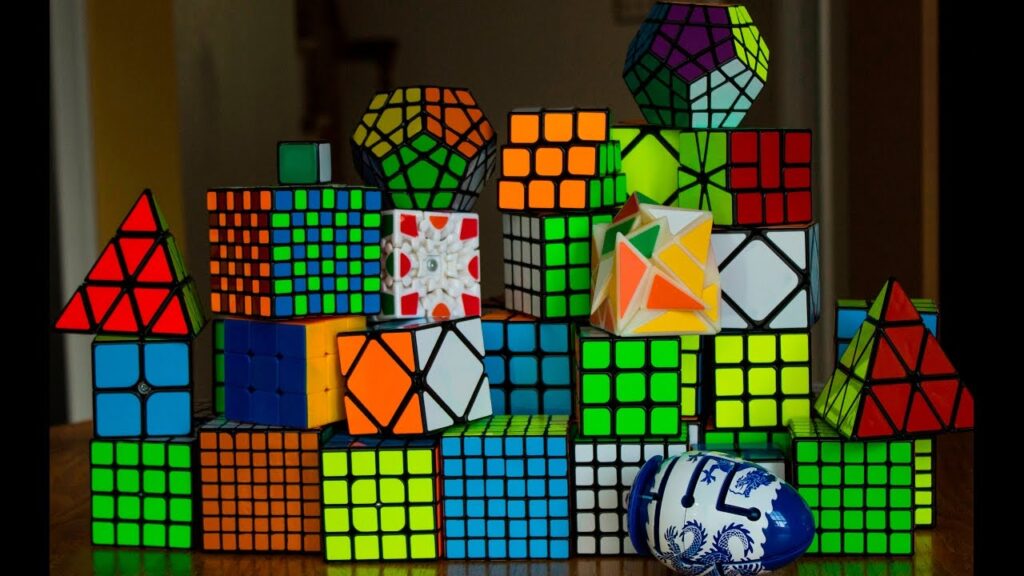
Photo Credit: Fandom
Number of Permutations on the Rubik's Cube
A 3×3 Rubik’s Cube has 43,252,003,274,489,856,000 possible permutations (Forty-three quintillion,two hundred fifty two quadrillion,three trillion,two hundred seventy four billion, four hundred eighty nine million, eight hundred fifty-six thousand.), which is approximately 43 quintillion. To put this into perspective, if one had one standard-sized Rubik’s Cube for each permutation, one could cover the Earth’s surface 275 times, or stack them in a tower 261 light-years high.

Photo Credit: Steril-Aire
Another perspective is if we consider the entire history of the Earth, which is roughly 4.5 billion years, the number of seconds that have passed is much smaller than 43 quintillion.

Photo Credit: SciTechDaily
Estimates suggests there are around 7.5 quintillion grains of sand on all beaches on Earth. Our number is still larger than that. If you were to solve one Rubik’s Cube every second, it would take trillions of years to try every single combination.
What’s next in Peter’s Box? ¡Hasta luego amigos!





